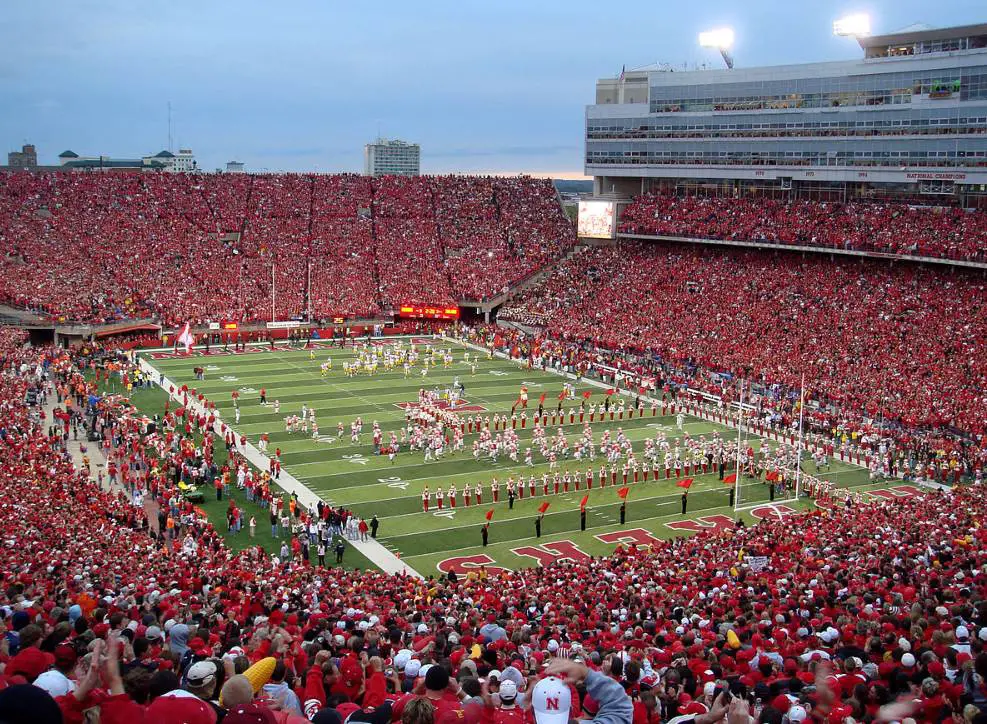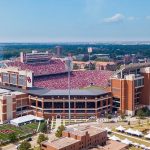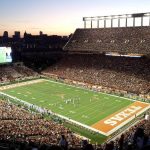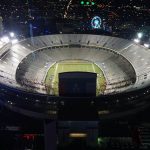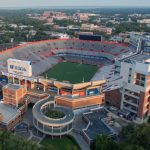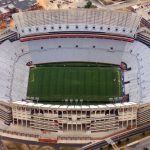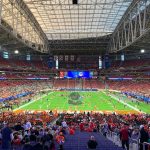This amazing stadium in the US is nicknamed “The Sea of Red” and is home to the local American football team in Lincoln, Nebraska.
What started out as a medium-sized stadium has become one of the biggest stadiums in the world after several expansion phases.
In this article, you’ll discover some of the most interesting facts about the Memorial Stadium, a magnificent sports venue with an interesting story to tell.
1. It’s located on the campus of the University of Nebraska-Lincoln
The Memorial Stadium is a large football stadium located on the campus of the University of Nebraska–Lincoln just north of downtown Lincoln.
This university was established in 1869 which makes it the oldest in the state. It was referred to as the University of Nebraska until 1968 when it merged to form the University of Nebraska system.
The stadium is mainly used for games by the Nebraska Cornhuskers football team and other university-related activities. The football team competes in the NCAA Division I Football Bowl Subdivision.
As you surely expected, the nickname of the stadium “The Sea of Red” is a reference to the color scheme of the local football team and the fans at the game who are dressed in red.
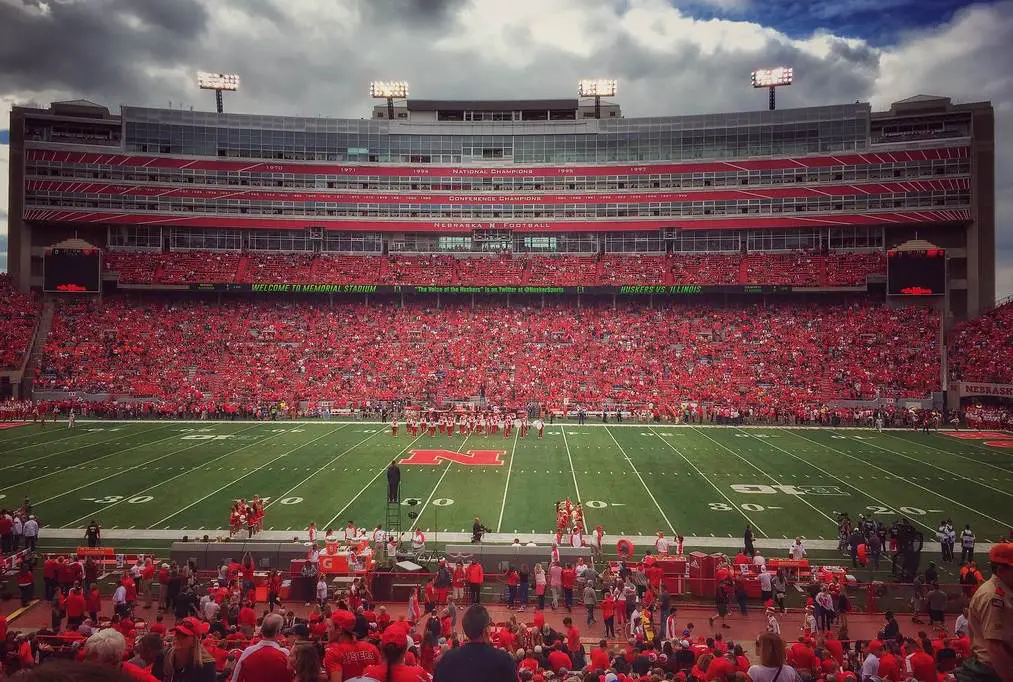
2. It has been home of the Nebraska Cornhuskers football team since 1923
The Nebraska Cornhuskers football team represents the University of Nebraska–Lincoln in the West Division of the Big Ten.
They have an extensive history that goes back to the year 1890 which is when they played their first season. They have played their games at Memorial Stadium since 1923.
They are very successful as well as they have, at the time of writing this article, won a total of 46 conference championships and 5 national championships in 1970, 1971, 1994, 1995, and 1997.
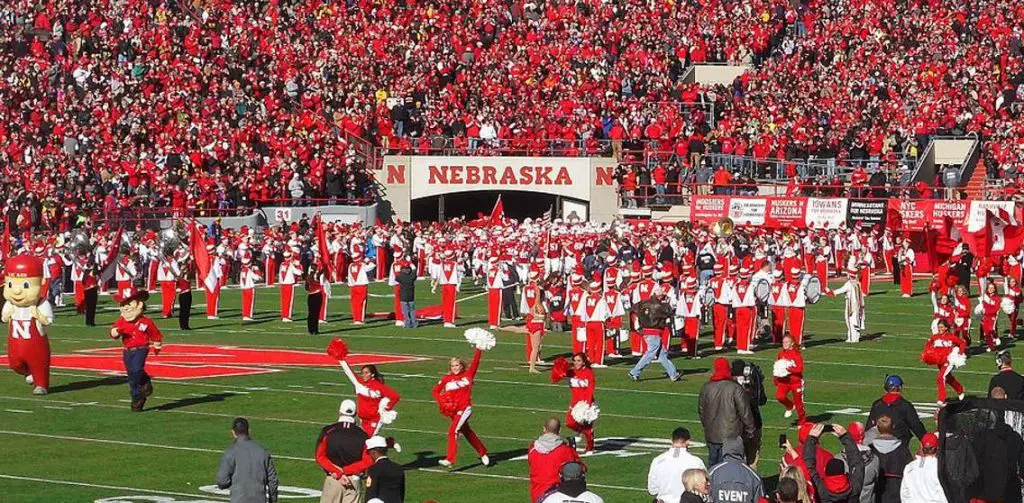
3. An older stadium was demolished to make way for Memorial Stadium
The football team originally played in a location called “Antelope Field”. This didn’t feature more than some wooden benches for fans so it was becoming seriously outdated in the early 20th century.
Earl Eager, a former player and athletics manager at NU at the time, described Antelope Field as “either as hard as a pavement or was a sea of mud.”
Eager was the man who put effort into the idea of building a stadium which was called Nebraska Field. This was located at the corner of North 10th Street and T Street.
It was completed in 1909 and could hold an estimated 16,000 fans. This number is based on the maximum attendance during the final game at the stadium in 1922 so it was probably lower.
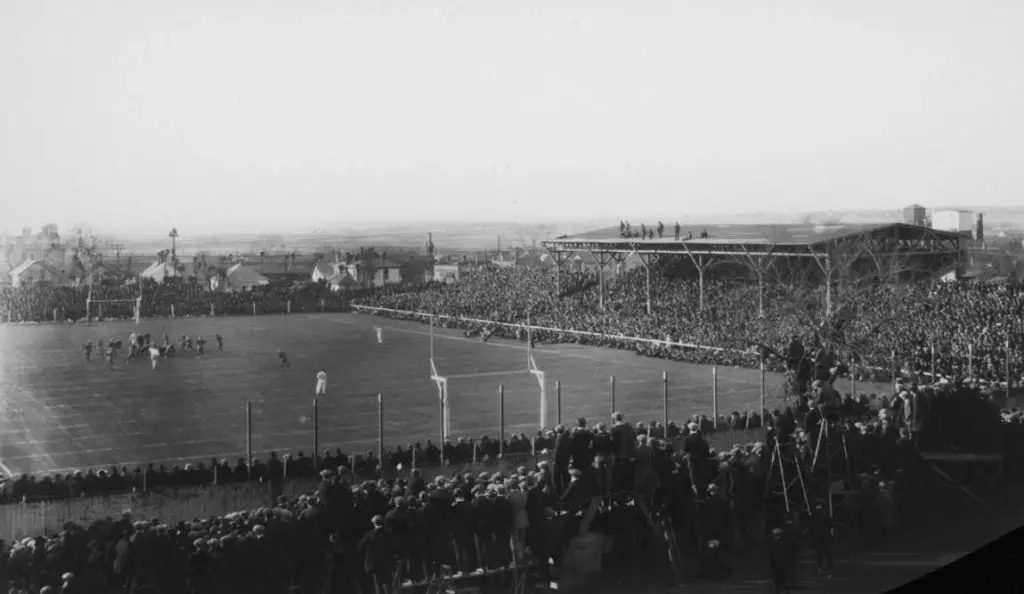
4. The stadium was dedicated to all Nebraskans who served in 3 wars
The popularity of football grew immensely during the 1920s and many immense football stadiums were constructed all around the country.
Nebraska Field was getting seriously outdated and a fundraising campaign to build a new stadium was launched and $450,000 was raised.
The original idea was to build a gymnasium-stadium-war museum complex but its plan was shelved due to the bad economic conditions following World War I.
The stadium was completed in 1923 and named the Memorial Stadium. It was dedicated to:
- Nebraskans who served in the American Civil War
- Nebraskans who served in the Spanish–American War
- The 751 Nebraskans who died in World War I
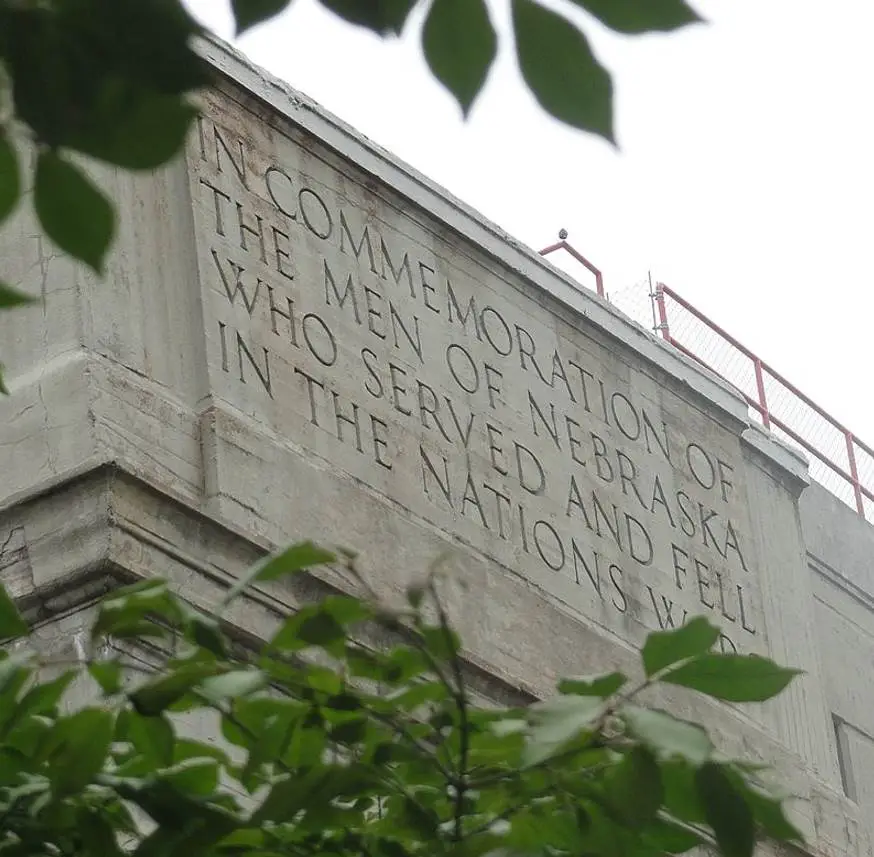
5. It took over 3 decades before the stadium was expanded for the first time
One of the most amazing facts about the Memorial Stadium is that the cornerstone was laid on April 23, 1923, and the stadium was completed just 90 days later.
The stadium could seat 31,080 spectators upon completion and it held this capacity for over 3 decades. A planned expansion phase in the 1940s was halted when the United States entered World War II in 1941.
The stadium was expanded to 48,000 seats when bleachers in the south end zone were installed in 1964. This gave the stadium a horseshoe design for the first time.
Just 2 years later in 1966, bleachers in the north end zone were installed as well, raising the capacity of the stadium to 62,644 seats.
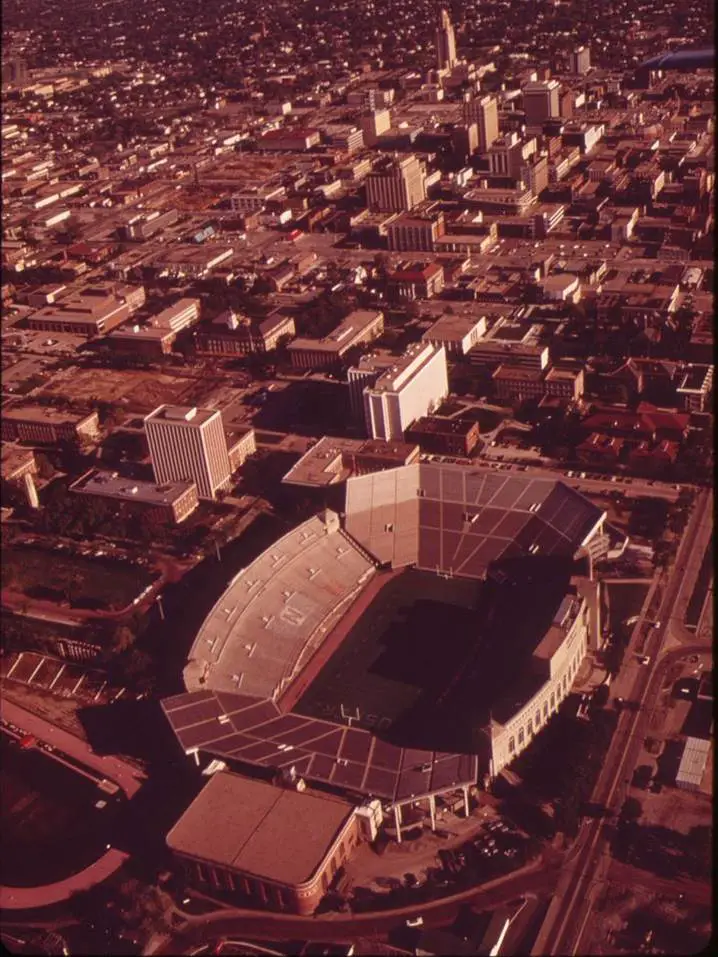
6. The luxury boxes of West Stadium date back to the mid-1990s
One of the most notable expansion phases after the 1960s happened in the 1990s. $36 million was spent to expand West Stadium.
Apart from the new façade facing Stadium Drive, press boxes, luxury boxes, and a stadium lounge were added to the stadium well.
This expansion phase in the 1990s brought the capacity of Memorial Stadium to 74,056 seats.
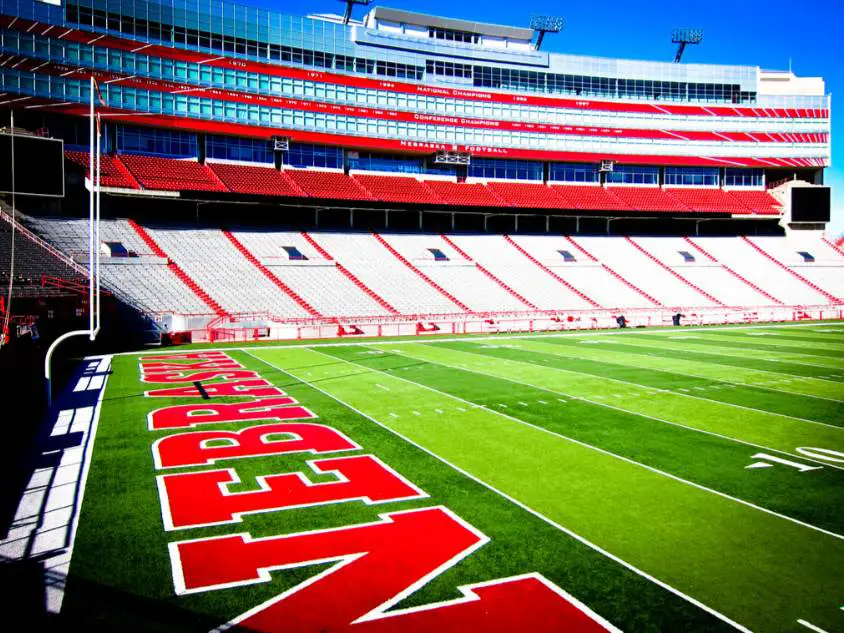
7. The early-2000s scoreboard was the largest in college football upon completion
In 2004, another expansion phase was initiated and seats were added to the north end zone. This brought the stadium’s capacity to 81,067.
One of the most amazing new features during this expansion phase was a huge scoreboard that dominates the north end zone of the stadium.
It has a height of 33 feet (10 meters) and a width of 120 feet (37 meters), dimensions that made it the largest scoreboard in college football upon completion in 2004.
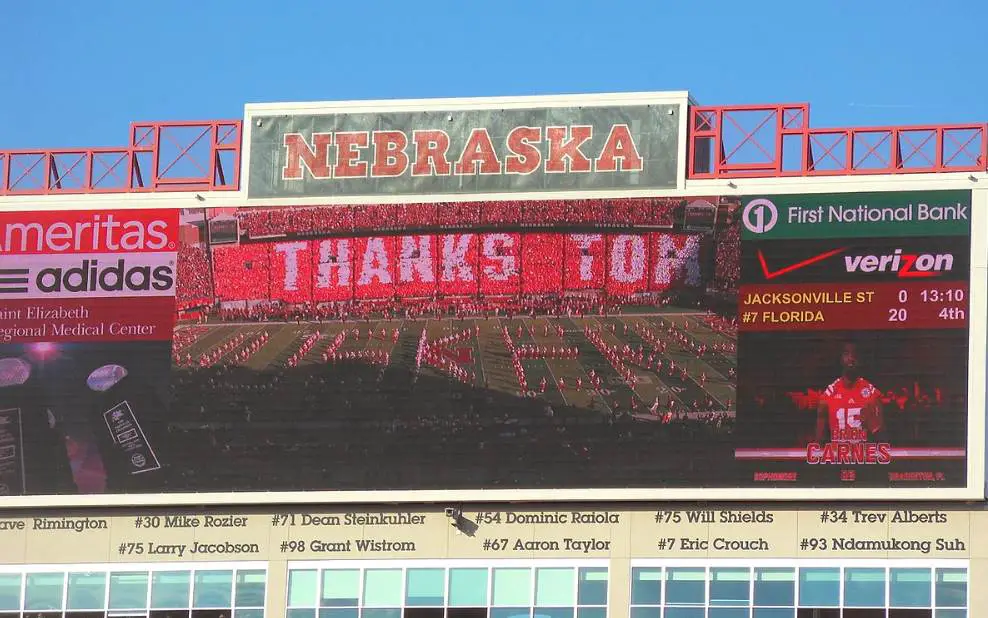
8. The final expansion phase cost $65 million and was completed in 2013
The final expansion phase of the stadium was completed and was focused on the East Stadium. Sky boxes and additional seats were added to this part of the stadium.
The $65-million project also featured 2 research facilities that were integrated into the East Stadium, both with a floor space of over 20,000 square feet (1,900 square meters).
What’s remarkable about this project was that the original façade of the East Stadium was maintained.
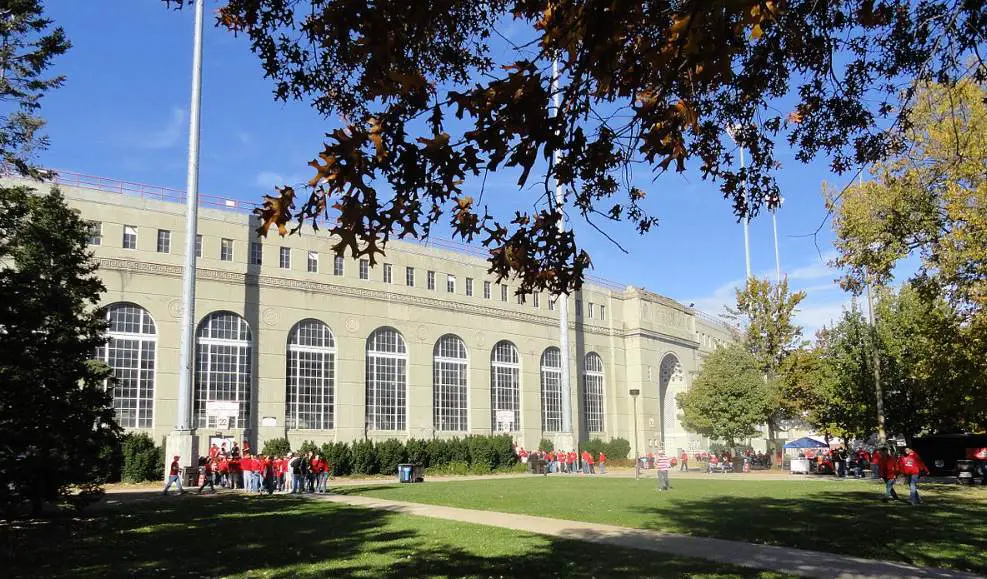
9. It became the 24th-largest stadium in the world in 2017
The expansion phase completed in 2013 brought the total capacity of the stadium to 87,147 seats, slightly more than today.
That’s because the seats of the north end zone were widened in 2015 and the seats in other parts of the stadium in 2017.
This reduced the capacity to 85,458 seats, a number that makes Memorial Stadium in Lincoln, Nebraska, the 24th largest stadium in the world today!
10. The stadium holds a remarkable record in college football
The most stunning fact about Memorial Stadium is that it holds the record for the longest streak of sold-out games in college football.
The streak started way back on November 3, 1962, and has been maintained severe since. That’s quite astonishing, don’t you think?
